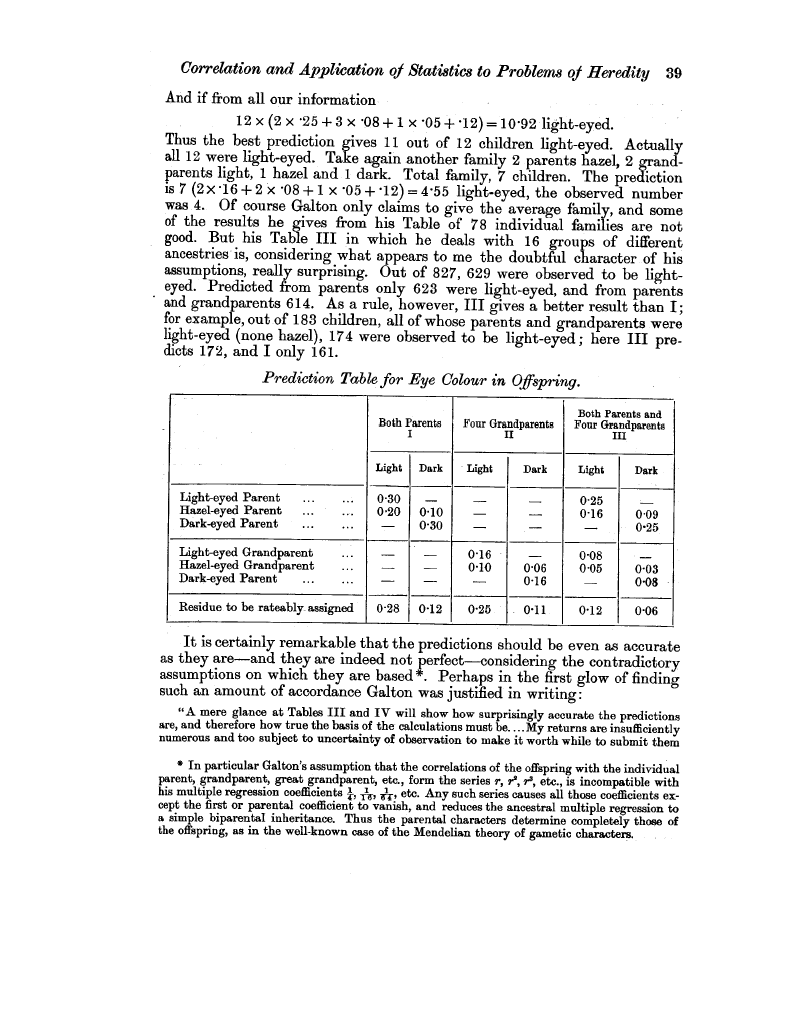| ||||||

OCR Rendition - approximate
Correlation and Application of Statistics to Problems of Heredity 39 And if from all our information 12 x (2 x '25 + 3 x -08 + 1 x -05 + '12) =10.92 light-eyed. Thus the best prediction gives 11 out of 12 children light-eyed. Actually all 12 were light-eyed. Take again another family 2 parents hazel, 2 grandparents light, 1 hazel and 1 dark. Total family, 7 children. The prediction is 7 (2x,16+2 x '08+1 x *05+-12)=4-55 light-eyed, the observed number was 4. Of course Galton only claims to give the average family, and some of the results he gives from his Table of 78 individual families are not good. But his Table III in which he deals with 16 groups of different ancestries is, considering what appears to me the doubtful character of his assumptions, really surprising. Out of 827, 629 were observed to be lighteyed. Predicted from parents only 623 were light-eyed, and from parents and grandparents 614. As a rule, however, III gives a better result than I; for example, out of 183 children, all of whose parents and grandparents were light-eyed (none hazel), 174 were observed to be light-eyed ; here III predicts 172, and I only 161. Prediction Table for Eye Colour in Offspring.
It is certainly remarkable that the predictions should be even as accurate as they are-and they are indeed not perfect-considering the contradictory assumptions on which they are based*. Perhaps in the first glow of finding such an amount of accordance Galton was justified in writing: "A mere glance at Tables III and IV will show how surprisingly accurate the predictions are, and therefore how true the basis of the calculations must be.... My returns are insufficiently numerous and too subject to uncertainty of observation to make it worth while to submit them * In particular Galton's assumption that the correlations of the offspring with the individual parent, grandparent, great grandparent, etc., form the series r, r', r', etc., is incompatible with his multiple regression coefficients I, ~, 1, etc. Any such series causes all those coefficients except the first or parental coefficient to vanish, and reduces the ancestral multiple regression to a simple biparental inheritance. Thus the parental characters determine completely those of the offspring, as in the well-known case of the Mendelian theory of gametic characters.
| |||||||||||||||||||||||||||||||||||||||||||||||||||||||||||||||||||||